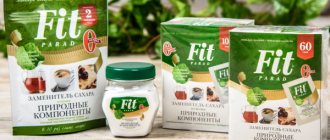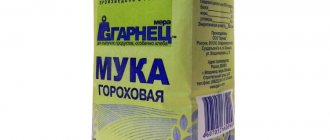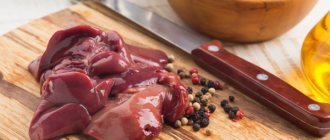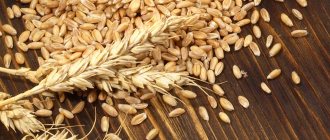Sorbitol is a naturally occurring sugar substitute obtained from plant sources. Another common name is sorbitol. The component is found in large quantities in fruits that have seeds, as well as in berries. Produced by the human body during metabolism in small quantities. The first food sorbitol was obtained from mountain ash, which determined the name of the sweetener - its origin is French, and le sorb from French stands for “rowan”.
Why do you need a sweetener?
Sweetener was first invented in 1879. It became quite popular during the First World War, when there was a catastrophic shortage of sugar.
All sweeteners are divided into two groups:
- natural;
- synthetic.
Among natural sweeteners, stevia, xylitol and sorbitol are very popular. The harm and benefits of these substances are practically the same.
Natural sweeteners are safer for health than synthetic ones, but they are also absorbed by the body and produce energy. Accordingly, they are also high in calories, although not as much. The second group has no calories at all and is not absorbed by the body.
There are several types of natural sweeteners. These are fructose, xylitol, stevia and sorbitol. The benefits and harms of each of them concern many people.
Analogs
The main analogue drugs are:
- Sorbitol;
- Xylitol;
- D-sorbitol;
- D-sorbitol.
Two sweeteners that are very popular today are sorbitol and xylitol (polyhydric alcohol). Many people are interested in what is better, which supplement has more benefits for the body? Below is a comparative description of both products:
- Both drugs are considered natural sweeteners and have the same nutritional value: xylitol per 100 grams - 370 calories, and its “opponent” - 360 calories.
- Hexahydric alcohol in powder has a specific taste, but it is less sweet than xylitol.
- Thanks to sorbitol, excess fluid leaves the body, and bile is also removed from the bladder.
- Both substances have a mild laxative effect and are often included in diabetic diets.
Level 4 ATX code matches:
- Romphalac
- Transipeg
- Normolakt
- Medulak
- Fortrans
- Exportal
- Fleet Phospho-Soda
- Good luck
- Lactulose
- Duphalac
- Normaze
- Forlax
The main analogues are represented by the following substances: D-sorbitol, D-sorbitol, Sorbitol, Xylitol.
Types of sweeteners and their differences
Natural sweeteners:
- Fructose is a natural substance found in honey, plant seeds, berries and fruits. 1.5 times sweeter than sugar. Given that the energy value of fructose is the same as that of sugar, it can also cause obesity. Therefore, it is not suitable for weight loss. But fructose is absorbed three times slower than glucose. The maximum dose is 45 grams per day.
- Sorbitol - was derived from apricots, frozen rowan berries, cotton seeds and corn. The taste is less pleasant and sweet than sugar. It is absorbed very slowly by the body, so it does not affect blood glucose. The maximum daily dose is 50 grams.
- Xylitol is very similar in composition to sorbitol. It tastes better and is sweeter. Some studies have shown that this substance in large doses can cause cancer. However, even daily use of the product within acceptable limits does not cause harm. The maximum daily dose is 50 grams. Xylitol and sorbitol are very similar to each other. The benefits and harms of these substances are almost the same.
- Stevioside is an extract of the stevia herb. It has a pretty good taste and a reasonable price. Does not lead to obesity. Studies of this substance have shown that stevioside has no side effects.
Among natural sweeteners, sorbitol is especially popular. Its benefits and harms differ significantly from synthetic analogues.
Chemical sweeteners:
- Acesulfame (E950) is a synthetic sweetener. It is not absorbed by the body and has low calorie content. Can be used at high temperatures for baking and confectionery making. Contraindicated in people with heart failure. The maximum daily dose is 15 grams per 1 kilogram of weight.
- Cyclamate (E952) is a synthetic sweetener. Completely calorie-free. Indicated for people with obesity and metabolic disorders. Not allowed in all countries. There is an opinion that cyclamate can provoke cancer, but studies have not revealed a relationship. However, there is a contraindication for the use of this substance by pregnant and lactating women, as well as young children.
- Saccharin (E954) is a chemical non-calorie sweetener with a bitter taste. It was first invented during the First World War. Studies have shown that saccharin in high doses actually provokes the development of cancer. Regular use of the substance in moderate quantities did not reveal the development of pathologies. Although in many countries saccharin is still on the list of prohibited products.
- Aspartame (E951) is a low-calorie synthetic sweetener. Among chemical sweeteners it is the most popular. Not suitable for cooking. At temperatures above 30 degrees Celsius it turns into a carcinogenic substance and provokes cancer.
The only advantage of chemical substitutes is that they taste sweeter than sugar. The remaining advantages still have natural substances:
- Stevia.
- Xylitol.
- Sorbitol.
The benefits and harms of natural sweeteners are incomparable with synthetic ones.

Sorbifer instructions for use. Sorbifer Durules tablets 50 pcs instructions for use
Active ingredients
Ferrous sulfate + Ascorbic acid
Release form
Pills
Compound
1 tablet contains: Active substance: Iron sulfate (II) 320 mg, ascorbic acid (Vit. C) 60 mg. Excipients: magnesium stearate, povidone K-25, polyethene powder, carbomer 934 R. Shell composition: hypromellose, macrogol 6000, titanium dioxide, yellow iron oxide, solid paraffin.
Pharmacological effect
Iron is an essential component of the body, necessary for the formation of hemoglobin and the occurrence of oxidative processes in living tissues. The drug is used to eliminate iron deficiency. Durules technology provides a gradual release of the active ingredient (iron ions) over a long period of time. The plastic matrix of Sorbifer Durules tablets is completely inert in digestive juice, but completely disintegrates under the action of intestinal peristalsis, when the active ingredient is completely released. Ascorbic acid helps improve iron absorption.
Pharmacokinetics
Absorption Durules is a technology that ensures a gradual release of the active substance (iron ions) and a uniform supply of the drug. Taking 100 mg 2 times a day provides 30% greater absorption of iron from Sorbifer Durules compared to conventional iron preparations. The absorption and bioavailability of iron are high. Iron is absorbed predominantly in the duodenum and the proximal part of the jejunum. Distribution: Bonding with plasma proteins is 90% or more. Deposited in the form of ferritin or hemosiderin in hepatocytes and cells of the phagocytic macrophage system, a small amount is in the form of myoglobin in muscles. Elimination T1/2 is 6 hours.
Indications
- iron deficiency anemia; - iron deficiency; - prophylactic use during pregnancy, lactation, in blood donors.
Contraindications
- esophageal stenosis and/or other obstructive changes in the digestive tract; - increased iron content in the body (hemosiderosis, hemochromatosis); - impaired iron utilization (lead anemia, sideroblastic anemia, hemolytic anemia); - children under 12 years of age (due to lack of clinical data); - hypersensitivity to the components of the drug. The drug should be used with caution in case of gastric and duodenal ulcers, inflammatory bowel diseases (enteritis, diverticulitis, ulcerative colitis, Crohn's disease).
Use during pregnancy and breastfeeding
It is possible to use the drug Sorbifer Durules during pregnancy and lactation according to indications.
Directions for use and doses
I take the drug orally. Film-coated tablets should not be split or chewed. The tablet should be swallowed whole and washed down with at least half a glass of liquid. Adults and adolescents are prescribed 1 tablet. 1-2 times/day. If necessary, for patients with iron deficiency anemia, the dose can be increased to 3-4 tablets/day in 2 doses (morning and evening) for 3-4 months (until the iron depot in the body is replenished). During pregnancy and lactation for the purpose of prevention prescribed 1 tablet/day; For treatment, 1 tablet is prescribed. 2 times a day (morning and evening). Treatment should be continued until the optimal hemoglobin level is achieved. To further replenish the depot, you may need to continue taking the drug for another 2 months.
Side effects
From the digestive system: nausea, vomiting, abdominal pain, diarrhea, constipation (the frequency of these side effects may increase with increasing dose from 100 mg to 400 mg); rarely (
Overdose
Symptoms: abdominal pain, vomiting and diarrhea mixed with blood, fatigue or weakness, hyperthermia, paresthesia, pale skin, cold clammy sweat, acidosis, weak pulse, decreased blood pressure, palpitations. In case of severe overdose, signs of peripheral circulatory collapse, coagulopathy, hyperthermia, hypoglycemia, liver damage, renal failure, muscle cramps and coma may appear after 6-12 hours. Treatment: in case of overdose, consult a doctor immediately. It is necessary to rinse the stomach, orally - a raw egg, milk (to bind iron ions in the gastrointestinal tract); deferoxamine is administered. Symptomatic therapy.
Interaction with other drugs
Sorbifer Durules may reduce the absorption of concomitantly used enoxacin, clodronate, grepafloxacin, levodopa, levofloxacin, methyldopa, penicillamine, tetracyclines and thyroid hormones. Concomitant use of Sorbifer Durules and antacid preparations containing aluminum hydroxide and magnesium carbonate may reduce the absorption of iron. The maximum possible time interval should be maintained between taking Sorbifer Durules and any of these drugs. The recommended minimum time interval between doses is 2 hours, except when taking tetracyclines, when the minimum interval should be 3 hours. Sorbifer Durules should not be combined with the following drugs: ciprofloxacin, doxycycline, norfloxacin and ofloxacin.
Benefits of sorbitol
In many countries, natural substitutes are still in great demand. The most popular is sorbitol. The benefits and harms of this substance are not known to everyone. This sweetener has the following positive properties:
- is a strong choleretic agent;
- stimulates intestinal function;
- good for complex treatment of liver diseases;
- does not cause caries;
- has a mild laxative effect.
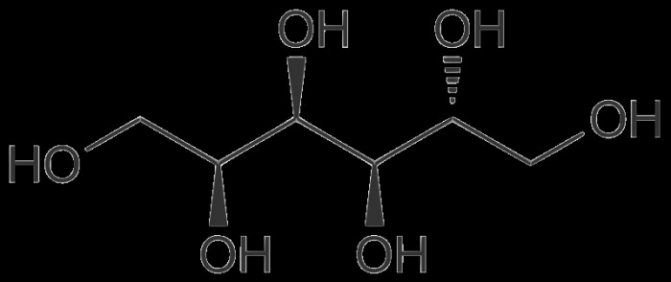
Confectionery products with added sorbitol
Due to the absence of negative effects on the body, sorbitol is approved for use in confectionery products. Many diabetic patients prefer sorbitol-based candies. Its benefits and harms are not comparable to similar chemical components. Sorbitol is added to various diet drinks, baked goods, jams and compotes. These products taste somewhat different from the usual ones. They taste less sweet and are quite specific. But consuming such products does not increase blood glucose, so it is completely safe. But you can still gain excess weight by eating such delicacies - the calorie content of sorbitol is not much less than that of sugar. For comparison:
- There are 360 calories in 100 grams of sugar.
- There are 240 calories in 100 grams of sorbitol.

Compound
Sorbitol is a hexahydric alcohol. Its chemical formula is written as C6H14O6. It is often used as a regular dietary supplement. In this case, you can find another designation on the packaging - E420. This additive is most often found in foods intended for people with diabetes. As you know, all sugar substitutes that exist are usually divided into two categories:
- Synthetic;
- Natural.
The product described belongs to the category of natural remedies. It was first discovered in a berry such as rowan. That is why scientists named it sorbitol, which means “rowan” in Latin. Interested in the unusual substance, scientists continued to study it. And thanks to these studies, they were able to find out that the substance is also found in other food products, namely apples, seaweed, apricots, and gooseberries.

The product is widely used not only in medicine, but also in confectionery. And only recently they began to actively use it as a means of helping to lose excess weight. However, you should not think that Sorbitol belongs to the class of fat-burning drugs. This is a fairly common myth that is designed to mislead people. In fact, the weight loss effect is achieved due to other properties of the substance.
Liver cleansing with sorbitol
Xylitol and sorbitol are often used to cleanse the liver. The benefits and harm to the liver will be assessed after completing the course of procedures. Cleansing the liver with sorbitol is called “blind probing.” That is, cleansing the bile ducts from sand and other debris. Contraindications to this procedure are the presence of large gallstones and duodenal ulcer. Although this method is recognized by official medicine, it should be carried out only after visiting a doctor and with the results of an ultrasound scan of the liver and gall bladder. Otherwise, you can seriously harm your health. During the cleansing process, large stones can clog the bile ducts, which will lead to stagnation of bile, inflammation and the need for surgical intervention. If there are no contraindications, then for the procedure you will need:
- 1 bottle of mineral water;
- 2-3 tablespoons of sorbitol.
In the evening, a bottle of mineral water is opened to let the gas escape. In the morning, 250 grams of this water are heated. Add 2-3 tablespoons of sorbitol and drink the mixture on an empty stomach. Then you need to lie down on your right side, placing a heating pad under it. You need to lie down for 40 minutes to two hours. 20 minutes after taking the mixture, drink the remaining mineral water, but without sorbitol. After completing the procedure, lying down is not recommended. It is also undesirable to eat on this day. It is best to drink freshly squeezed juices and water all day long. It is better to carry out the procedure 6 times in a row every other day.
Medicine or treat?
If aspartame or some sucralose are primarily sweeteners, then sorbitol has also become known as a medicine: any instructions for use will confirm this to you. The main superpower of the product: it cleanses the liver and bile ducts.
Sorbitol can be used both in the hospital and at home to cleanse the intestines or liver. The nutritional supplement is used for constipation, biliary dyskinesia, and chronic cholecystitis. And also - if the body is polluted and needs to be cleaned carefully and safely.
The laxative properties of the drug are noted not only by doctors, but also by all lovers of this sweetener. If you decide to use sorbitol for weight loss, reviews will always remind you: a few spoons of sweetener a day - and it’s better not to go far from home.
The supplement works as a laxative at a dose of 30-50 g per day: it needs to be determined individually. If the portion is 30-40 g, it will lead to flatulence; if you increase it to 45 or more, a strong laxative effect will appear. Be careful: sorbitol cleanses powerfully, but the process is accompanied by flatulence, colic, and sometimes pain. Not ready for this? Then consult your doctor and choose a more gentle remedy.
Sorbitol for children
Despite the absence of contraindications, it is still not recommended to give sorbitol to children. A healthy child’s body safely absorbs and expends a lot of energy, so sugar is even beneficial for babies. If a child has diabetes, then sugar is replaced with a sweetener. Often these children are given sorbitol. The benefits and harms of this substance in diabetes are optimal for a small organism. Sorbitol has many beneficial properties:
- does not increase blood glucose;
- is a strong choleretic agent;
- has a positive effect on intestinal function;
- has a mild laxative effect.
In moderate doses it has no side effects.
